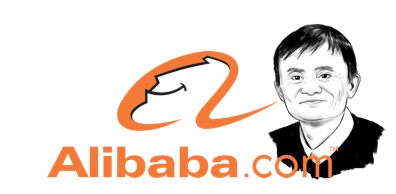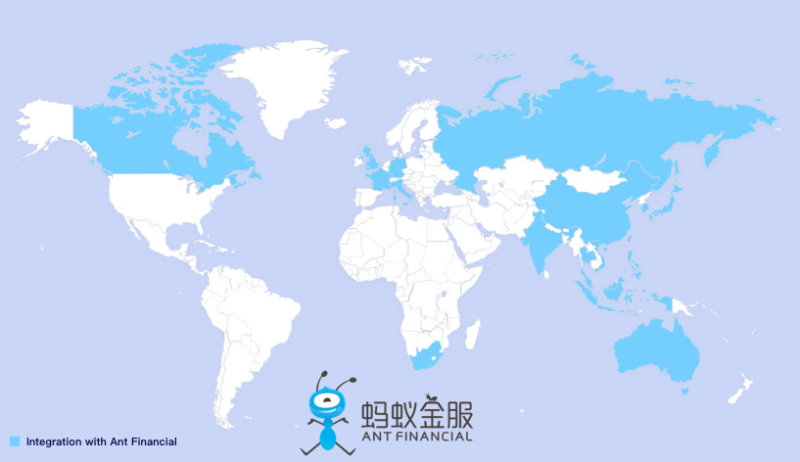Alibaba
Alibaba may have started life as an online marketplace in the late 90s but it has grown into a $350bn technology giant. Its charismatic founder, Jack Ma, has made no secret of his ambition to upgrade China’s financial system. Indeed Alibaba’s entrance into financial services began over a decade ago with mobile payments service Alipay that itself has become a symbol of the country’s digital development.
Watch now: Video insight into the wider issues raised in this article with Swiss Re’s Yannick Even and the TDI team
To date, Alibaba has amassed 520 million users under its fintech arm Ant Financial and pioneered a range of financial services that span wealth management, loans, mobile payments, and most recently, insurance. As a result Alibaba is well placed to take advantage of China’s developing insurance sector, which exhibits a mere 4.5% penetration rate and is expected to contribute 30% to global premium growth up to 2030.
Furthermore, Alibaba’s dilution of its stake in Zhong An has left its digital insurance agenda at a cross roads, and Alibaba must now grapple with several new frontiers.
- The first is a renewed push for globalisation. China’s One Belt One Road initiative has spurred Alibaba to expand its global footprint through increased M&A and strategic partnerships, particularly in South East Asia.
- The second is a commitment to preventative healthcare. China suffers disproportionately from chronic diseases and Alibaba is developing a raft of O2O services that include remote diagnostics, online drug delivery and chronic disease management devices.
- Finally, new technologies from autonomous vehicles to genetic profiling and customer authentication pose a platform challenge to Alibaba. How it takes advantage of the possibilities these technologies offer will be fundamental to its development.
In light of these trends, and recent regulatory actions, there’s a clear recognition within Alibaba that it’s not enough for it to act only as a distribution hub, but that it needs to forge ahead with a service based ecosystem, and several initiatives are already underway:
1.Internationalisation
Putting Alibaba on the global stage has always been part of Jack Ma’s plan. Indeed his ability to court international investors such as Yahoo and Softbank contributed significantly to its early success.
The opportunity for Ant Financial overseas is also significant as location data, purchasing behaviour, transaction patterns and disposable incomes are just a few of the signals that will enable scenario based insurance offerings that extend far beyond the cross selling of generic personal accident policies that currently characterises Ant Financial’s insurance portal.

Another tenet of Alibaba’s expansion plan is strategic partnerships. PayTM in India, Kakao Pay in Korea, Mynt in the Philippines, Ascend Money in Thailand, and Verifone in the USA have all embraced Alipay. However, as Ant’s short-term, high-yielding investment products soar, they hoover up savings, and recently introduced deposit caps reflect regulatory pressure to deflate Alipay’s money market fund Yu’e Bao. China’s central bank also cancelled an August trial in which Alibaba was developing credit scores based on user transaction behavior. Instead, Alibaba was handed a stake in Baihang, a state-owned credit-rating system.
Ultimately, although regulatory restraint and geopolitical stumbles have cast a shadow on Alibaba’s global ambitions, the macro trend is positive and Alibaba’s goal of generating 40% of revenues from international markets over the next decade remains intact.
2.Preventative Healthcare
China suffers disproportionately from chronic diseases. The accompanying government care burden is exasperated by 110 million diabetics and another 330 million suffering from high blood pressure, a major pre-cursor to stroke, heart disease and dementia. Considering this, and China’s ageing demographic picture, Alibaba is attempting to unify the triumvirate of AliPay, AliHealth, and Tmall to pave the way for an all-encompassing digital health insurer. To get there, Alibaba has embarked on several initiatives through its healthcare subsidiary AliHealth. These include:
Alihealth is an O2O platform that integrates online consultations and prescription drug distribution with offline treatment centres and pharmacies. In an effort to further bridge online diagnostics with offline treatment, Alihealth is piloting a feature that allows users to upload a photo of their prescription and then receive multiple price bids from nearby pharmacies. A separate trial applying the same technology to facilitate facial recognition based payments for prescription drug payments is underway in Beijing, Shanghai, Shenzhen and Guangzhou.
To address the bureaucracy that burdens public healthcare in China, Alipay has been integrated with thousands of public hospitals to facilitate co-pay arrangements for state-funded health insurance. This not only streamlines internal administration efforts, it also gives Alibaba access to claim data which it can use to offer additional online diagnostic services such as second opinion and alternative prescription drug provisions. Other examples include a new Alihealth feature Doctor You that can read CAT scans remotely to identify inflammatory cells, an early indicator of cancer. Finally, the recent deregulation of China’s online pharmaceutical market will bring AliHealth and Alipay closer together, an integration which will realise Alibaba’s goal of creating an end to end healthcare service and out shine its current competitors – Ping An’s Good Doctor and Tencent’s WeDoctor.Today, patients that are transferred between Chinese hospitals have no guarantee of data integrity between hospitals. Although Chinese pharmacies, clinics and insurers are currently reconciling this medical data manually, Alihealth is piloting a blockchain initiative with several provincial governments to store health records on a distributed ledger so that changes to a patient’s medical record are auditable across multiple organisations. Although the ability to make electronic health records more accessible and auditable is a powerful proposition, Alihealth has been careful to gain regulatory support for initiatives that require public/private collaboration, especially those that involve China’s health system.
Targeted medicine and DNA profiling have been heralded as the future of preventative healthcare. As the understanding of genetics increases, so too will the need for biomedical engineers who can turn scientific breakthroughs into commercial offerings. Although Alibaba lacks the internal skill set needed to pioneer preventative healthcare, it has made several investments in the field including Tanxiobei, a specialist provider of health insurance to diabetics that is priced based on patients’ blood glucose monitoring results and Genbox, which uses oral mucosa sampling to detect genes highly correlated to breast cancer and other critical illnesses. However, even the most advanced genomic mapping still offers only subtle clues as to an individual’s susceptibility to certain diseases, and Alihealth is emphasizing that O2O services will remain its focus in the short to medium term.
3.Emerging Tech
Finally, Alibaba’s destiny will also depend on its ability to grapple with several well-known trends, particularly AI. The notion that software will perform functions typically associated with the human mind is fast becoming a reality and although Alibaba has excelled at cross selling short-term universal life policies, commonly structured as short-term savings products in China, the fact it lacks the agency and bancassurance network required to distribute the critical illness, protection orientated life insurance and private medical insurance products is an irony not lost on its senior executives.
The challenge to convert the higher margin life/health insurance products has fallen to Alibaba’s chatbot team who work from an anonymous looking grey building on Alibaba’s Hangzhou campus. Inside, the team sit at tables dotted with PowerAI hardware docks, designed to tie CPUs and Ali’s ‘neural network’ as closely as possible. This neural network is an AI layer that operates in two stages. The first is the training stage, where Alibaba’s chatbot team trains the neural network to perform a given task, in this case, keyword recognition based customer service. The second is the execution stage, where users interact with the chatbot, known internally as Alimebot 阿里小蜜 which improves the accuracy of the neural network and expands the factors it considers.
However, succeeding in the era of AI will require terabytes of data to train the algorithms used. This has spurred Alibaba to make several services available to external organisations, including insurers. For example, Alibaba recently unveiled an app that can process auto insurance claims in seconds whilst assessing exterior vehicular damage and displaying vehicle
damage information to users, including where to repair the vehicle. Although this is a radically different method of assessing claims, it’s worth noting that even the most sophisticated loss adjusting solutions have limitations. Internal damage is invisible to image recognition for instance, and prior generation models can appear identical but have structural differences.
Traditionally, tech companies have fought hard to keep new innovations proprietary. In this instance, Alibaba’s willingness to engage with potential competitors is an example of the mentality that companies will need to foster in order to pioneer AI use cases going forward.
Conclusion:
Alibaba’s quest to unify its user base with Alipay’s transaction data and AliHealth’s O2O services is a worthy cause, one that will not only address market inefficiencies, but also spur Alibaba’s global expansion whilst lowering the societal barriers that limit use of financial services in underdeveloped regions. Although Alibaba’s work at the intersection of ecommerce and mobile payments has improved the lives of millions in China, only time will tell if its digital insurance pursuits will deliver similar results across Asia. In a region known for its breakneck pace of change, the wait may not be long.
Watch now: Video insight into the wider issues raised in this article with Swiss Re’s Yannick Even and the TDI team



























































Comments